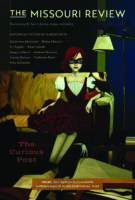Art | August 18, 2021
The Charm Offensive: Magritte’s Influence on Contemporary Art
Kris Somerville
The Charm Offensive: Magritte’s Influence on Contemporary Art
Kristine Somerville
“All I know of hope, I place in love.” —René Magritte
During the World War II, René Magritte aimed through his painting to launch what he called “a charm offensive.” In opposition to the brutality of the war, he wanted to find some pleasure for himself and others. He wrote, “The German occupation marked a turning point in my art. Before the war, my paintings expressed anxiety, but the experiences of the war have taught me that what matters in art is to express charm. I live in a very disagreeable world, and my work is meant as a counter-offensive.” He went on to explain that “it lies with us, who have some notion of how feelings are invented, to make joy and pleasure.” Magritte was criticized by his fellow surrealists, particularly André Breton, who publicly opposed what he considered a simplistic notion. He thought it ridiculous to foster “charm, pleasure, sunshine” at the exclusion of “sadness and boredom.”
If you are a student, faculty member, or staff member at an institution whose library subscribes to Project Muse, you can read this piece and the full archives of the Missouri Review for free. Check this list to see if your library is a Project Muse subscriber.
Want to read more?
Subscribe TodaySEE THE ISSUE
SUGGESTED CONTENT

Art
Apr 16 2024
Face Off: Anti-Portraiture in Contemporary Art
Face Off: Anti-Portraiture in Contemporary Art Pablo Picasso’s 1906 Cubist painting Portrait of Gertrude Stein, considered the archetype of anti-portraiture, was created out of frustration and anger. Day after day, in… read more

Art
Jan 08 2024
Robert Henri: Art for Life’s Sake
Robert Henri: Art for Life’s Sake In biographies of American artists of the late nineteenth and early twentieth centuries, Robert Henri’s name appears often. While he was known as cofounder… read more

Art
Dec 18 2023
Edward Hopper and the Art of Voyeurism
Edward Hopper and the Art of Voyeurism Kristine Somerville Edward Hopper didn’t wait for inspiration; he searched for it during his daily walks around New York City. He moved at… read more

